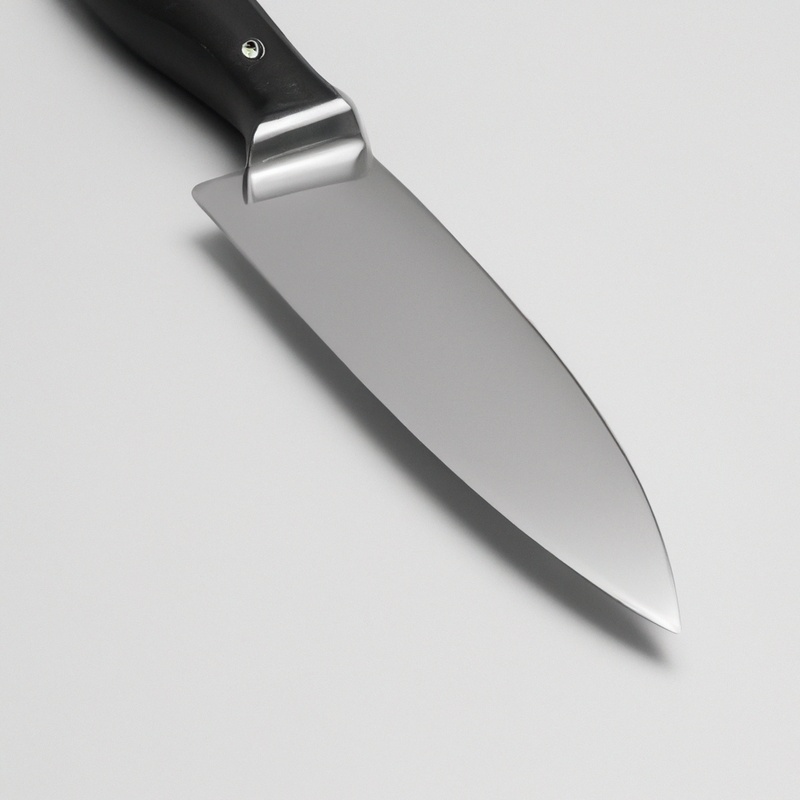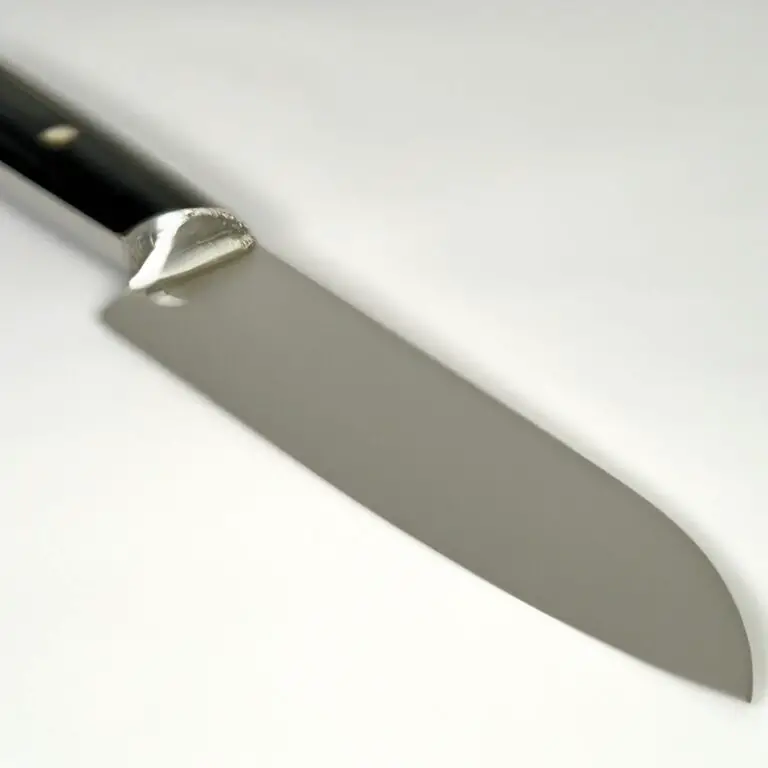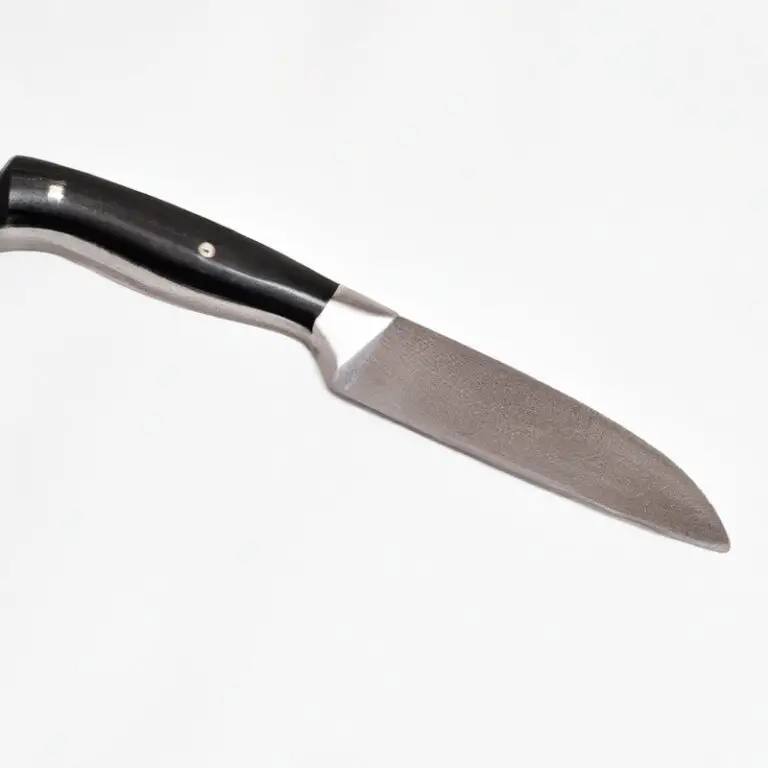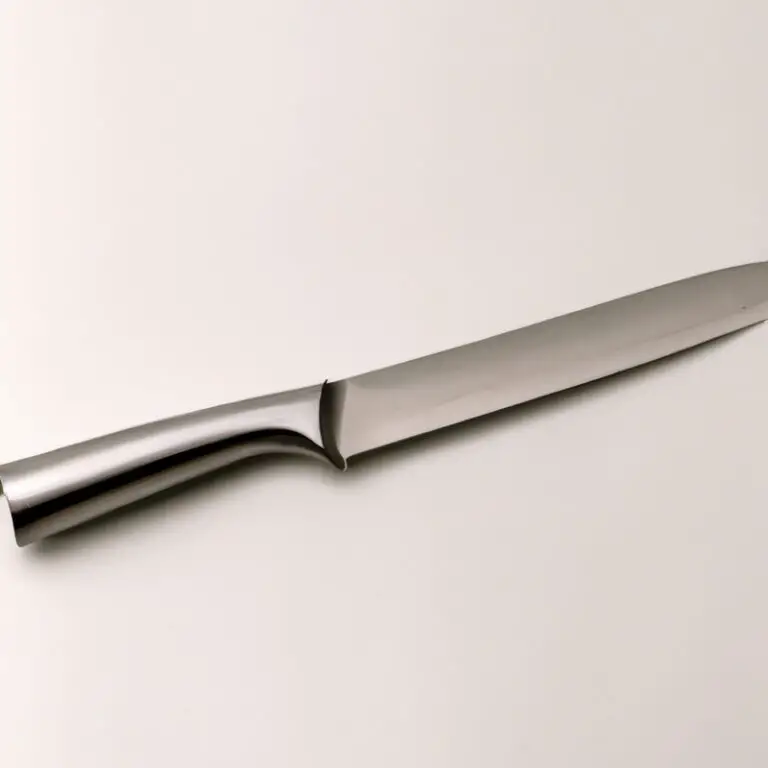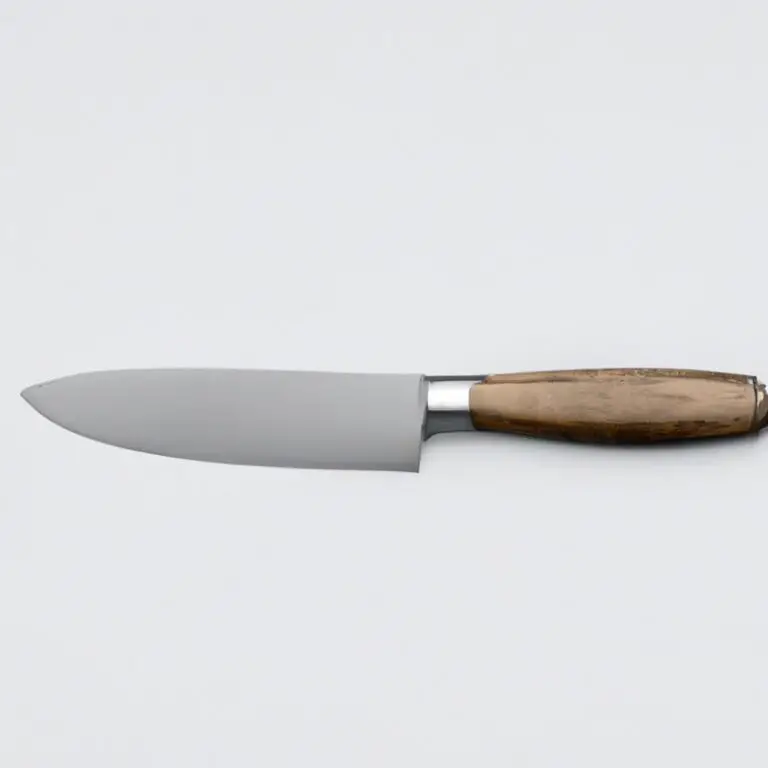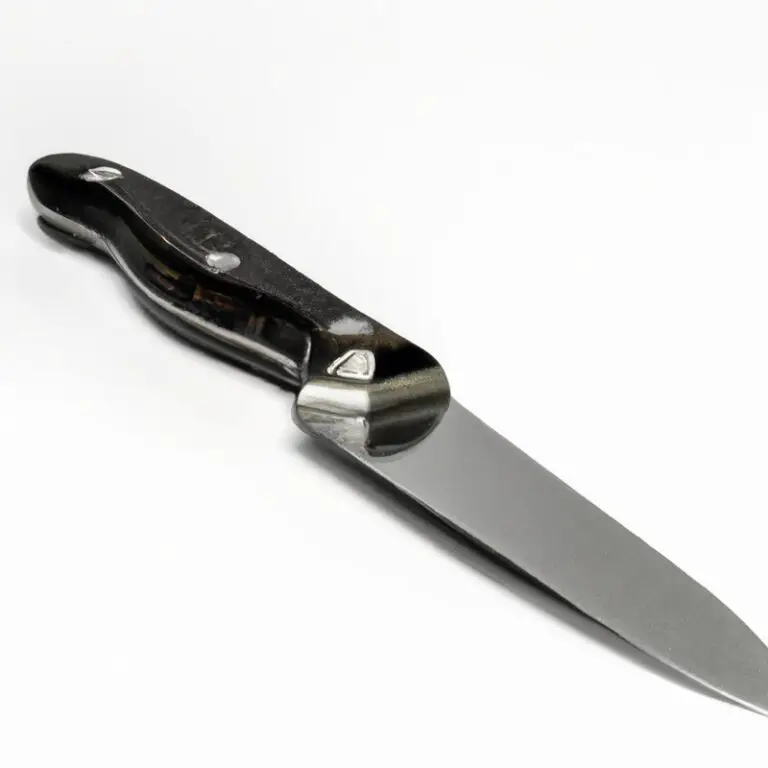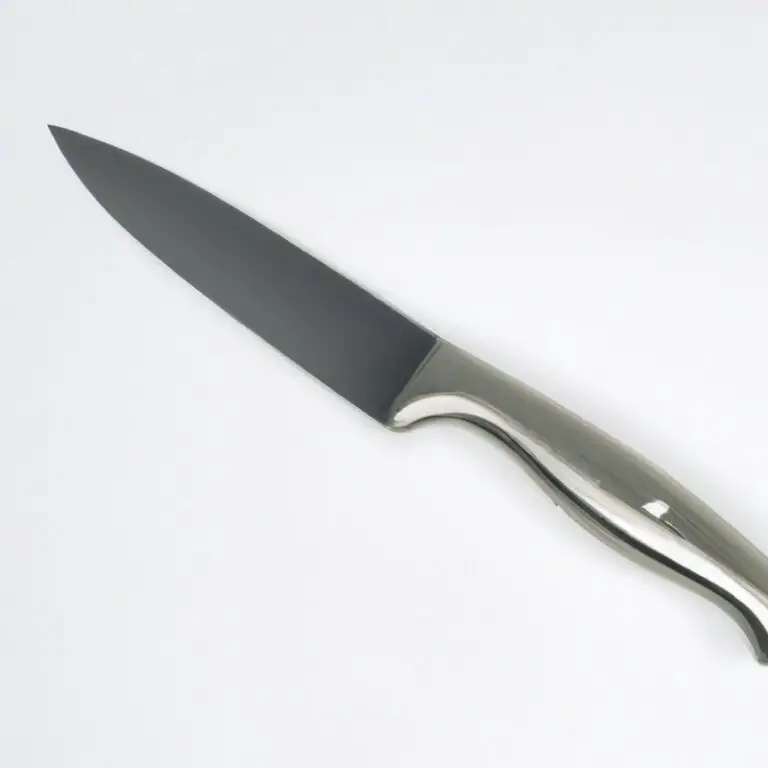How Do I Maintain The Sharpness Of My Paring Knife? – Easy Tips!
Key Takeaways:
- Sharpen your paring knife regularly to maintain its sharpness.
- Use a honing rod to maintain the edge of your knife before and after each use.
- Store your paring knife properly to prevent damage to the blade.
- Practice safe handling techniques when using your knife to avoid unintentional damage or injury.
A high-quality paring knife is a crucial tool in any kitchen, as its sharp blade can slice and dice even the smallest of ingredients with ease. However, if not properly maintained, a paring knife can quickly become dull and ineffective, making cooking a frustrating experience.
In this article, I will share some valuable insights into how to keep your paring knife sharp, including how often to sharpen it, the best sharpening tools to use, and the correct technique to store it.
Follow these simple steps, and you’ll always have a razor-sharp paring knife at your fingertips.
| Steps to Maintain Knife Sharpness | Description |
|---|---|
| Use a Sharpening Stone | Use a sharpening stone to sharpen the blade at the appropriate angle. Starting with the coarse side, stroke the blade at a 20-degree angle until the blade forms a sharp edge. Repeat on the other side, then flip to the fine side and repeat the process. |
| Hone the Blade Regularly | Use a honing steel to align the blade after each use. Place the honing steel vertically on a cutting board or countertop and hold it steady with your non-dominant hand. Use your dominant hand to swipe the blade against the steel from the base to the tip of the blade. |
| Store Properly | Store your paring knife in a knife block, on a magnetic strip, or in a knife sheath to prevent the blade from getting dull and scratched. |
| Avoid Hard Surfaces | Avoid cutting on hard surfaces like ceramic plates or glass, which can dull the blade. Instead, use a cutting board made of wood or plastic. |
| Hand Wash Only | Avoid putting your paring knife in the dishwasher as this can cause the blade to dull quickly. Instead, hand wash with warm soapy water and dry immediately. |
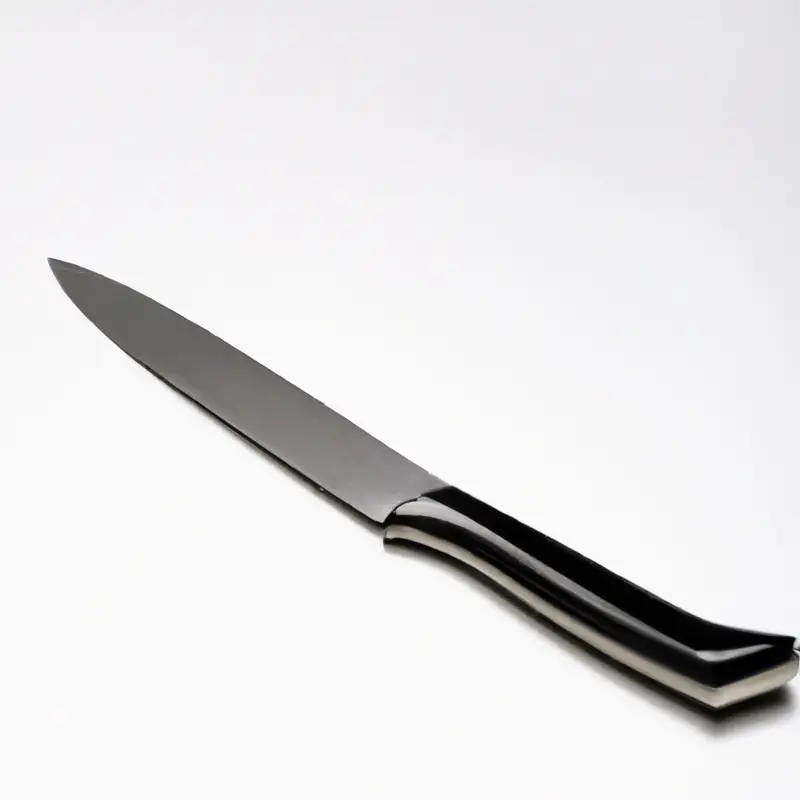
Understanding the importance of maintaining a sharp paring knife
Maintaining a sharp paring knife is essential for efficient and safe food preparation. A sharp knife will require less force to cut through ingredients, reducing the chance of slips and injuries.
A dull knife, on the other hand, can easily slip and cause severe injuries.
A sharp paring knife also ensures a clean, precise cut that stands up better to cooking. Regular maintenance of your paring knife’s sharp edge will help to extend the lifespan of the blade, which in turn saves you money in the long run.
Keep your paring knife sharp, and you’ll be a happier cook.
The frequency of sharpening a paring knife
The frequency of sharpening a paring knife depends on the frequency of its usage. If you use your knife every day, it is advisable to sharpen it once every week to maintain its sharpness.
However, if you use it less frequently, you can sharpen it every 2-3 weeks.
It is essential to pay attention to the knife’s blade and sharpen it before it becomes too dull. Regular honing with a honing rod can also prolong the time between sharpening.
The bottom line is that you should sharpen your paring knife whenever it becomes dull or at least once a month.
Choosing the right sharpening tool for your paring knife
When it comes to choosing the right sharpening tool for your paring knife, there are several options available. Whetstones, honing rods, electric sharpeners, and manual sharpeners are all viable options to maintain your paring knife’s sharpness.
Whetstones are the most traditional and effective sharpening tool for paring knives, as they provide control and precision when sharpening.
However, honing rods are also a great option for maintaining the sharpness of your blade between sharpenings. Electric sharpeners are convenient, but they do not offer the same level of precision as whetstones or honing rods.
Manual sharpeners, such as pull-through sharpeners or sharpening stones, are also effective tools for sharpening your paring knife, but require more skill and practice to achieve a great result.
Ultimately, the choice of which sharpening tool to use depends on personal preference and proficiency. It is essential to choose a tool that you feel comfortable using, as a poorly sharpened blade can be dangerous.
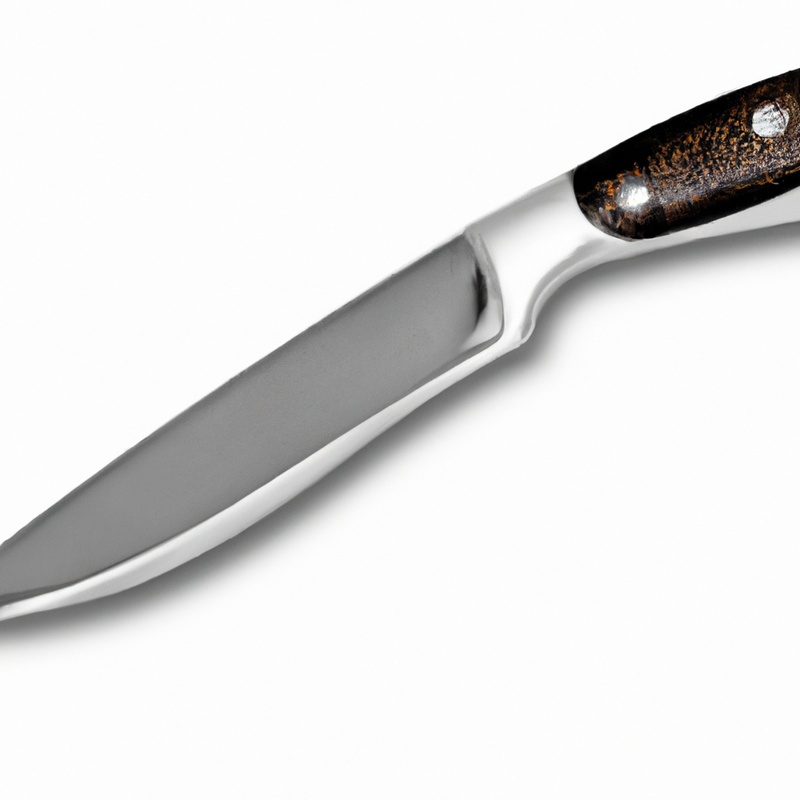
How to properly sharpen your paring knife with a whetstone
Sharpening a paring knife with a whetstone requires practice and patience. Here are the steps to follow:
- Soak the whetstone in water for 10-15 minutes before using it.
- Place the whetstone on a stable surface such as a cutting board or a table.
- Hold the knife at a 20-degree angle on the whetstone’s surface and maintain that angle throughout the process.
- Move the blade back and forth across the whetstone in a circular motion, starting from the base of the blade and working your way up to the tip.
- Repeat the process on the other side of the blade, holding the knife at the same angle.
- Use a honing rod to refine the edge and remove any burrs.
- Test the sharpness of your knife by slicing a piece of paper or a tomato. If it cuts smoothly, you’ve done a good job sharpening your knife.
Remember to clean your knife and whetstone after sharpening. With practice, you’ll be able to sharpen your paring knife effectively using a whetstone.
Alternatives to sharpening with a whetstone
Apart from using a whetstone to sharpen your paring knife, there are other alternatives available. Here are some popular alternatives to sharpening with a whetstone:
- Electric Knife Sharpener: An electric knife sharpener can be a fast and efficient way to sharpen your paring knife. Just run the knife through the machine, and it will automatically sharpen the blade.
- Manual Knife Sharpener: A manual knife sharpener is affordable and easy to use. Simply hold the unit in one hand and run the blade of your knife through the sharpening slots.
- Leather Strop: A leather strop is a strip of leather that is used to polish and hone the blade of a knife. You can purchase a leather strop and use it to keep your paring knife sharp.
- Diamond Sharpening Stone: A diamond sharpening stone is a durable and long-lasting option for sharpening your paring knife. The diamond abrasive will sharpen your knife quickly, and it won’t wear down as quickly as a traditional whetstone.
Choose the alternative that works best for you and your paring knife. Remember to always use caution when sharpening your knife, and take the necessary safety precautions.
Using a honing rod to maintain the sharpness of your paring knife
Using a honing rod regularly can help maintain the sharpness of your paring knife. A honing rod doesn’t actually sharpen your knife, but instead, it straightens and aligns the blade’s edge, removing any microscopic burrs that can affect the knife’s performance.
To use a honing rod, hold the rod vertically on a cutting board or countertop and hold the knife at a 15-20 degree angle against the rod.
Draw the knife down the rod, starting at the base of the blade and ending at the tip, using light pressure. Repeat a few times on each side of the blade.
Be sure to clean your knife after honing to remove any metal shavings that may have accumulated.
Storing your paring knife properly to avoid dulling
Proper storage of your paring knife is crucial to avoid dulling and maintain its sharpness. After using your paring knife, make sure to clean and dry it thoroughly before storing.
Avoid storing it in a drawer with other utensils as they can cause contact damage or water damage to the blade.
Instead, use a knife block, magnetic holder, or protective sheath to keep it in a safe and dry place. Additionally, never store your paring knife upside down as this can cause unnecessary wear and tear on the blade.
By following these simple steps, you can ensure that your paring knife stays sharp for longer periods.
Techniques for safe and effective paring knife usage
To ensure safe and effective paring knife usage, there are a few techniques to keep in mind:
- Always use a cutting board or surface to avoid damaging the blade or injuring yourself.
- Hold the knife firmly and use short, controlled movements rather than sweeping motions.
- Keep your fingers curled inwards and away from the blade, using a “claw grip” technique.
- Avoid cutting towards your body or other hand.
- Take breaks if you become fatigued or distracted, as accidents can easily occur.
- Clean the knife immediately after use to prevent any buildup of bacteria or food debris.
By following these simple techniques, you can safely and effectively use your paring knife and avoid accidents while maintaining its sharpness.
Signs that indicate your paring knife needs sharpening
It can be tough to know when your paring knife needs sharpening. Here are some signs to keep in mind:
- Difficulty slicing through fruits and vegetables
- Increased pressure needed to cut through foods
- Tearing or bruising of the food instead of a clean slice
- Uneven cuts due to a dull blade
- Jagged or rough edges on the blade
- Visible nicks or chips in the blade
If you notice any of these signs, it’s time to sharpen your paring knife. A sharp knife will not only make your kitchen tasks easier, but it will also ensure safer and more efficient cutting.
Professional sharpening services for paring knives
Professional sharpening services are available for those who prefer to have an expert handle the maintenance of their paring knives. These services offer a high level of precision and can restore knives to their original sharpness.
Most professional sharpening services use specialized machines that grind and polish the blade to a fine point.
This process can be cost-effective in the long run, as it prolongs the lifespan of the paring knife. Some sharpening services offer mail-in options, while others may have physical locations.
It is important to research and choose a reputable service with experienced technicians to ensure the best results for your paring knife.
Final Verdict
Maintaining the sharpness of your paring knife is essential for achieving precise cuts and an enjoyable cooking experience. With the information provided in this article, you now have a better understanding of the importance of regular sharpening, the proper tools to use, and safe techniques for usage.
By implementing these tips and tricks, you’ll ensure your paring knife remains sharp and effective for all your culinary needs.
Remember to store your knife properly and keep an eye out for signs that it needs sharpening. Lastly, don’t hesitate to seek professional sharpening services if needed.
Trust us, maintaining a sharp paring knife will enhance your cooking skills and impress your dinner guests.

